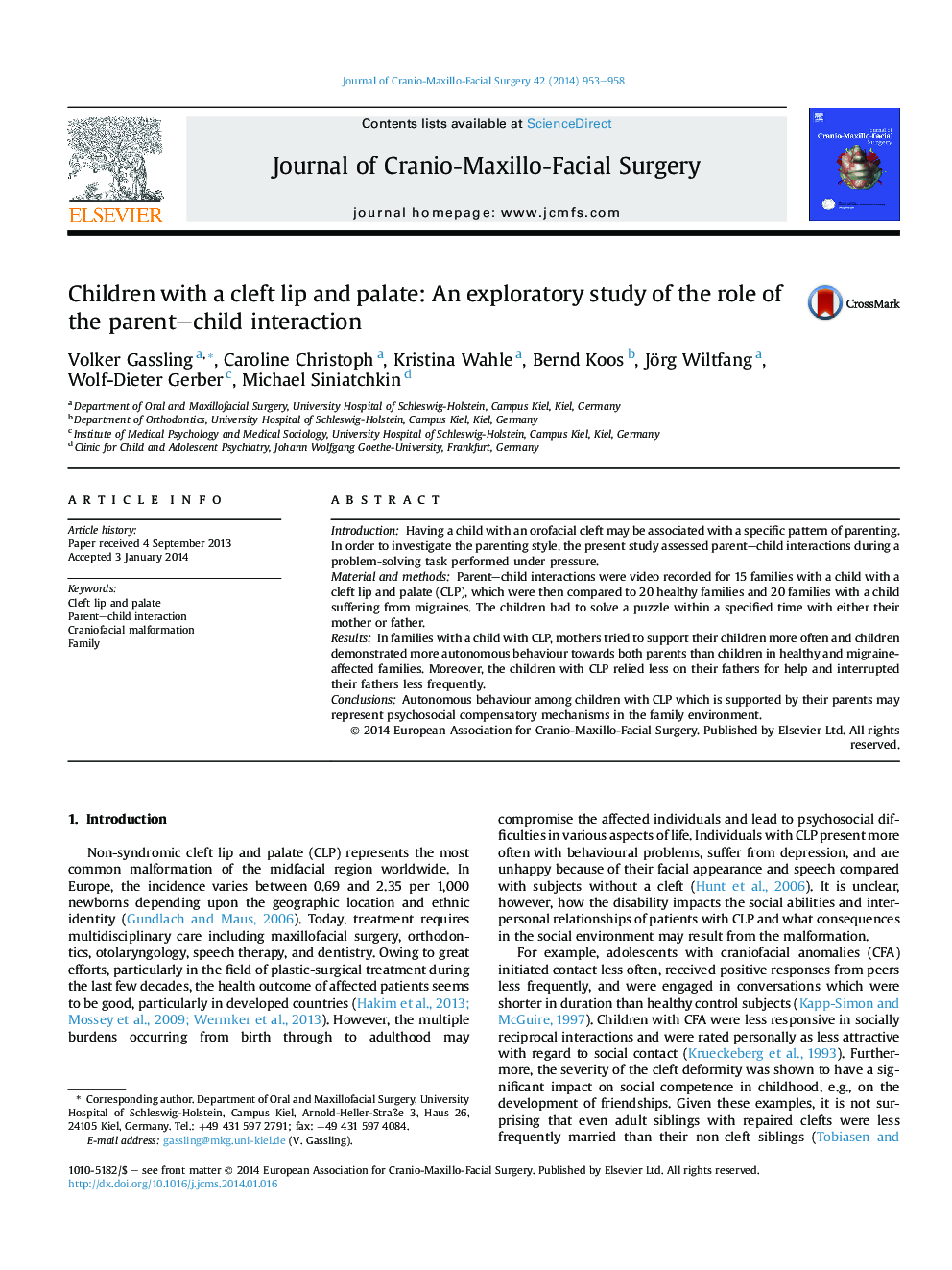| Article ID | Journal | Published Year | Pages | File Type |
|---|---|---|---|---|
| 3143321 | Journal of Cranio-Maxillofacial Surgery | 2014 | 6 Pages |
IntroductionHaving a child with an orofacial cleft may be associated with a specific pattern of parenting. In order to investigate the parenting style, the present study assessed parent–child interactions during a problem-solving task performed under pressure.Material and methodsParent–child interactions were video recorded for 15 families with a child with a cleft lip and palate (CLP), which were then compared to 20 healthy families and 20 families with a child suffering from migraines. The children had to solve a puzzle within a specified time with either their mother or father.ResultsIn families with a child with CLP, mothers tried to support their children more often and children demonstrated more autonomous behaviour towards both parents than children in healthy and migraine-affected families. Moreover, the children with CLP relied less on their fathers for help and interrupted their fathers less frequently.ConclusionsAutonomous behaviour among children with CLP which is supported by their parents may represent psychosocial compensatory mechanisms in the family environment.
